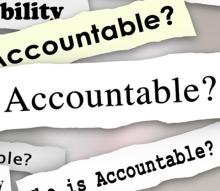One of the most common forms of professional communication is the ‘Presentation.’ No matter what career you have – professor, researcher, science policy analyst, CEO of a company – chances are you will have to prepare and deliver professional presentations. In fact, you probably give presentations regularly already – for lab meeting, at professional conferences, for your thesis proposal, or for your job interview. However, no matter why you are giving your talk, the goal is the same: Communicating and sharing information with your audience. Because of this, there are some simple principles that any talk should have – and you can use these are the building blocks of any presentation you prepare.
- Have a story: Every talk has a story. Just like any story – from a book or a movie – no one remembers every detail, but just the major events. Your goal is to construct your presentation so that people leave remembering the major points. Start by asking yourself, “What are the ‘major events’ your audience should know about your story? If they have 5 minutes to summarize my talk, what is it I want them to be able to say?”
- Plan your Transitions: Successful presentations are about successful transitions. Transitions occur throughout your talk. There is a transition from your introduction to your first major point. Another transition occurs when you move to the next point. Transitions also occur from slide to slide. If you understand the story you are trying to tell, then having smooth transitions is easier. When you are practicing your talk, think about how you will lead your audience from one point to the other. For example, once you complete your specific aims of your experiments, your audience should know (and you should too) that the next major point to discuss is the methods used, in only enough detail for them to understand what comes afterwards – highlights from the results.
- You are the Presentation, not the Slides: With Powerpoint and other presentation applications today, most people prepare slides to go with their talk. While this is not a bad thing, the slides should not be the focus of your story. Filling your slides with the verbatim text of your presentation bores your audience, invites them to read ahead (and by doing so, stop listening to you), and in the ends, makes them wonder why you could not have just written the talk and handed it to them before hand. You are the presentation: You tell the story, you decide what the important aspects to emphasize are, and you direct the audience’s attention to interesting features of graphs and figures. Your slides are tools and landmarks that help you stay on track, and remind you what major point you wanted to make at that time. Perhaps outline your story on a piece of paper, and then create your slides to help support your story.
Here is a recent videocast of a workshop that the OITE did on Talking Science: Designing and Delivering Successful Oral Presentations
No matter what type of talk you need to give, before you start, think first about your story, how you will transition from major point to major point (and from slide to slide), and do not rely upon you slides to tell your story. With these basics you can create any great talk!




